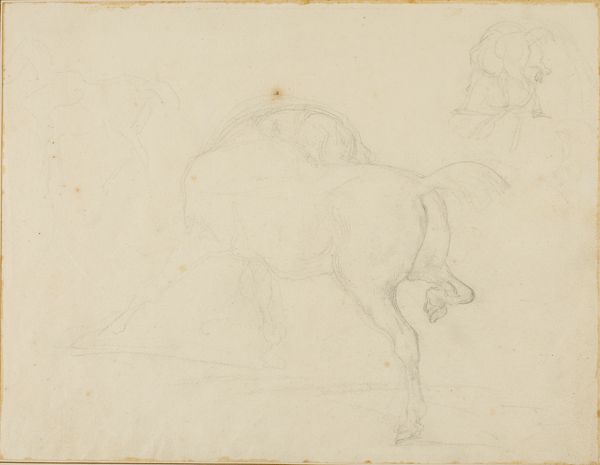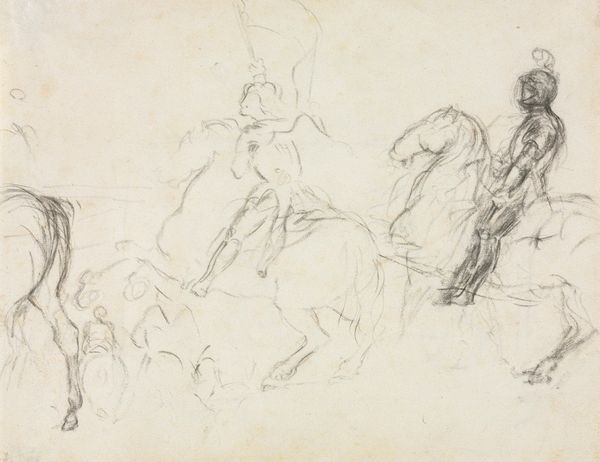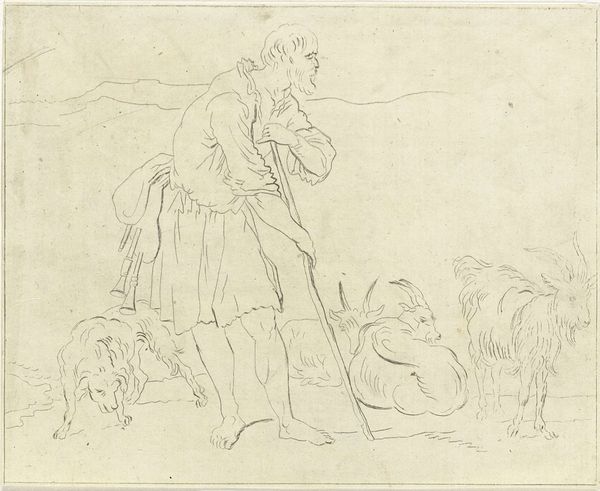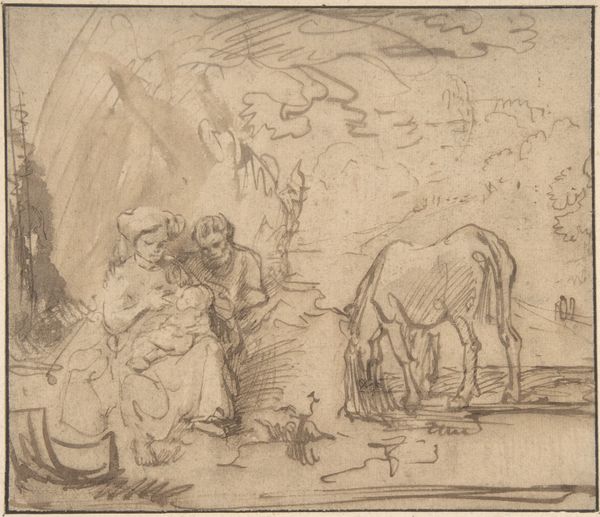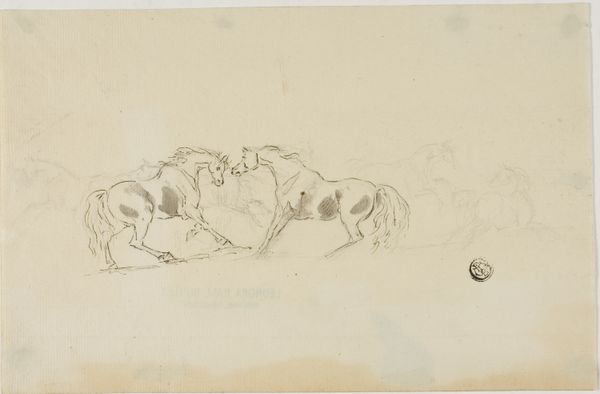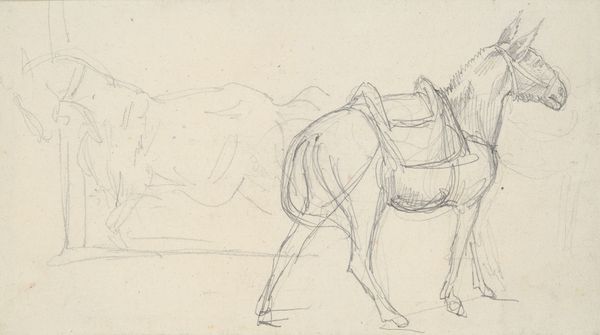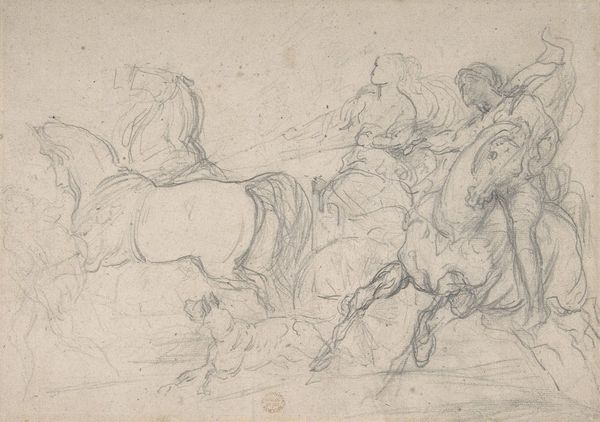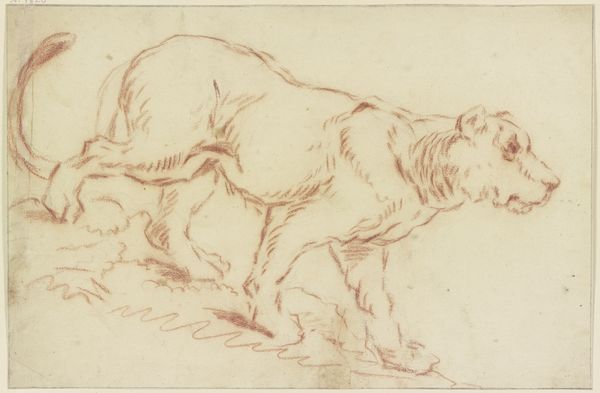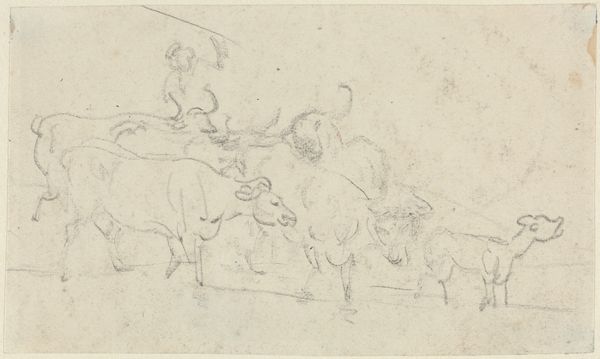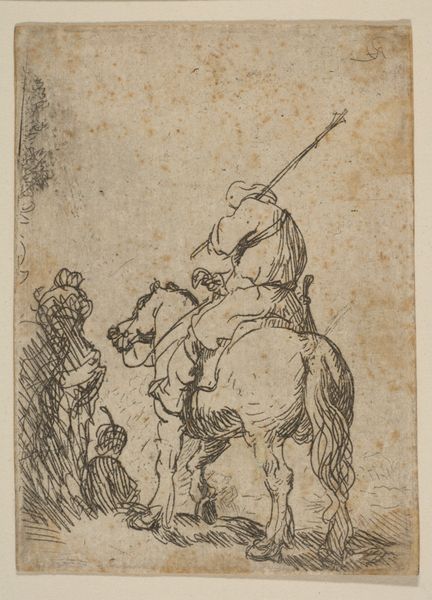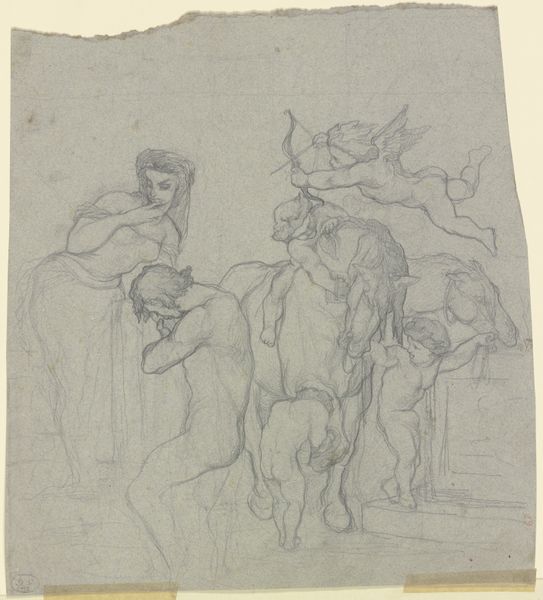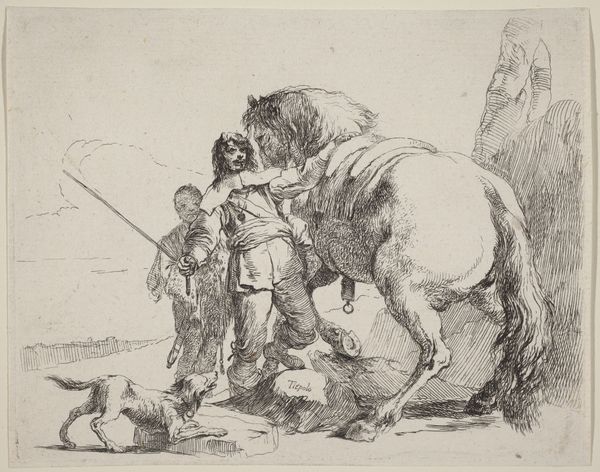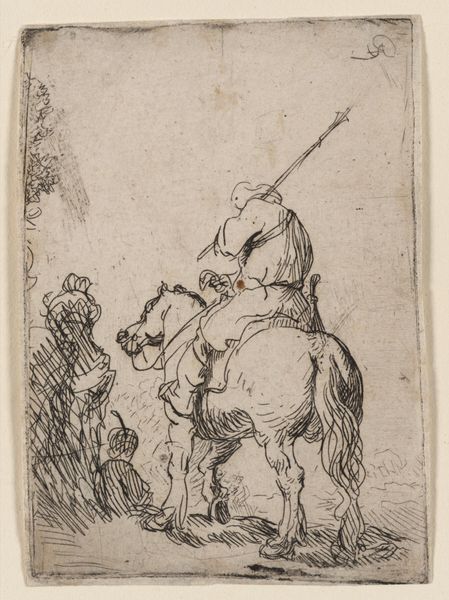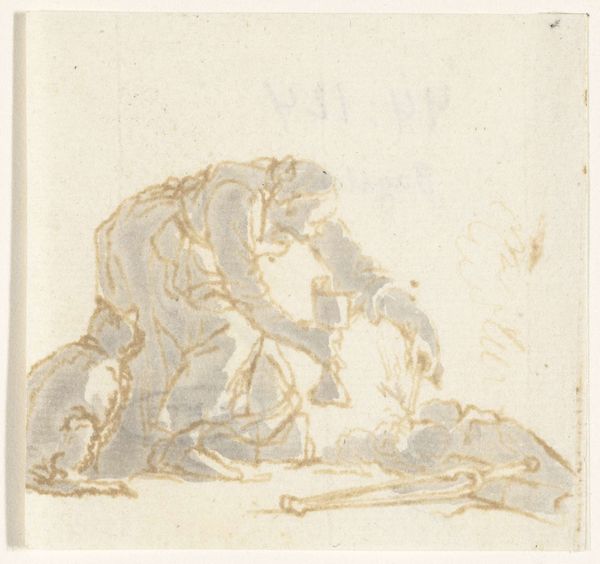
drawing, print, paper, graphite
#
drawing
# print
#
landscape
#
figuration
#
paper
#
romanticism
#
graphite
Dimensions: 275 × 211 mm
Copyright: Public Domain
Curator: Looking at "Stableboy Grooming a Horse," rendered in graphite on paper around 1814 by Théodore Géricault, one can see a wonderful example of his early exploration into equine anatomy. Editor: The first thing I notice is its vulnerability, the fragility conveyed by the medium itself—graphite on paper. It speaks to the inherent power dynamics between humans and animals, doesn't it? Curator: Indeed. The lines are loose, almost ethereal. Géricault captures the horse's tension, its weight. Note how he emphasizes the muscular structure; it's as if he’s seeking to understand the animal's very essence. Think of how the horse features as a symbol of power across so many eras! Editor: And domination. These seemingly pastoral images often obscure histories of labor, class, and exploitation. The groom is also faceless, nameless. He's rendered merely as a tool for maintaining the horse's power. It begs the question: whose story are we really seeing here? Curator: Well, it is important to see how the motif of grooming takes on complex social meanings—it's about more than just appearances, after all! The act carries significant symbolic and psychological weight related to both taming and idealizing animals. It resonates with the theme of the "noble savage," the individual unspoiled by civilization. Editor: I appreciate the Romantic era’s obsession with authenticity and the natural world. However, there’s a critical distance we need to maintain. Aren't we simply transferring the desire to return to a natural past onto animal bodies and idealizing our connection to it? How can we reckon with its complicated colonial implications? Curator: A powerful and necessary intervention. By looking at it critically and exploring that tension, we ensure these past visions still spark important conversations. Editor: Precisely. I hope it allows viewers to reflect critically on the history being conveyed. Curator: Yes, to unravel the various symbolic threads intertwined with themes of mastery, labor, and perhaps even something a bit gentler between the horse and his keeper.
Comments
No comments
Be the first to comment and join the conversation on the ultimate creative platform.
